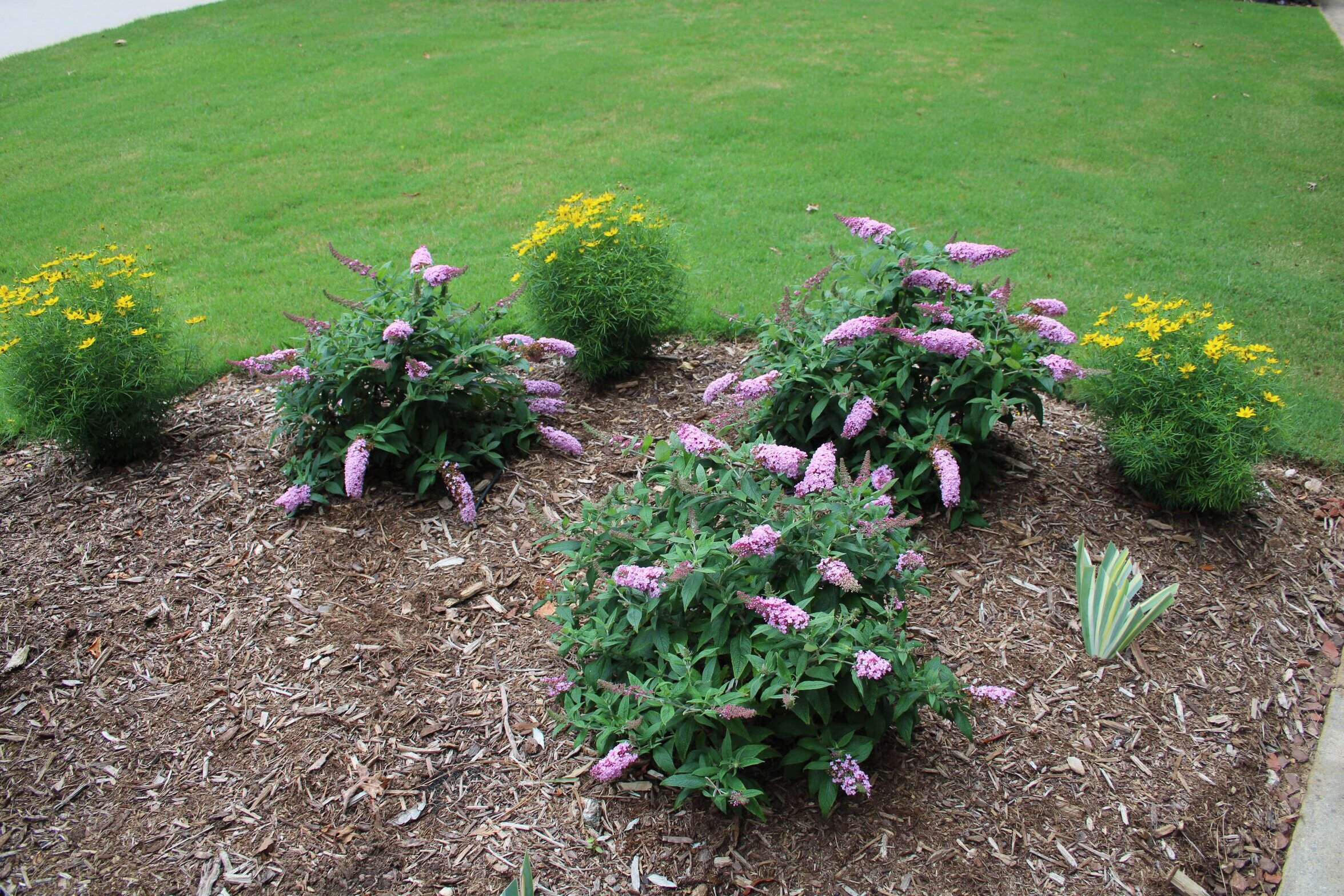If your landscape plans for next year include a pollinator garden, consider including Buddleia, known as Butterfly Bush. Some gardeners shy away from using this heat- and drought-tolerant plant because older cultivars may grow to be huge and can reseed to the point of nuisance. In some states they are considered invasive. Newer introductions, namely the Lo and Behold™ series and the Pugster™ series (both trademarked) are small in stature and well-behaved.
Buddleias bloom on new growth, so should be pruned in late winter or very early spring (before new growth emerges) to increase the number of blooms and to retain their rounded form. The blooms produce copious nectar. In addition to butterflies, many other pollinators flock to the clusters of sweet-smelling bloom panicles that are shaped almost like ice cream cones. In my zone 7b garden, Buddleias start blooming in June and continue until a hard freeze occurs. Pruning away the dead flowers will make future blooms more plentiful.
Buddleias need full sun and well drained soil. They prefer a soil with pH of 6.0 to 7.0, so throw an extra handful of lime their way if your soil test indicates an acidic soil. These tough shrubs are cold hardy in zone 5 to 9, although they may be winter-killed to the ground in the colder zones. Their growth rate is so fast, this hardly matters.
Most Buddleia blooms are shades of purple or lavender, but are also available in shades of white, blue, pink and yellow.
Buddelias are typically trouble-free, but on occasion may be stricken with spider mites, mildew, or nematodes. Resist the urge to use insecticides for these problems, since those would have a negative impact on visiting pollinators. Try to counter any issues by insuring adequate moisture during droughts and siting plants in locations with good air circulation.
If your space allows for a large specimen, ‘Black Knight’ is widely available; its blooms are a rich purple. It may reach six feet or more in a single season. ‘Nanho Blue’ is smaller, reaching four or five feet. For smaller yards and smaller gardens, the Pugsters and Lo and Beholds make wonderful anchors for beds but can also stand alone. Lo and Behold is a small shrub with small flower clusters; Pugster is even smaller but has full-sized blooms. A well-grown Pugster is a thing of beauty.
A white Buddleia pairs with yellow Coreopsis and rosy Joe Pye Weed in the pollinator bed of Lake Lure Flowering Bridge in Lake Lure, NC
A young planting of Buddleia Pugster Amethyst with yellow Coreopsis

